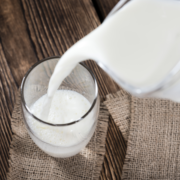Let’s Swap Foods!
 We talked in my last post about ways to make your New Year’s Resolution effective. You don’t want to be in the 92% who abandon their resolution before it has any effect.
We talked in my last post about ways to make your New Year’s Resolution effective. You don’t want to be in the 92% who abandon their resolution before it has any effect.
We also talked about selecting smaller changes to make on a consistent basis rather than trying to make a major change that you find unsustainable. I gave you some general ideas and would now like to explore some more specific ingredient trades for you to nibble on.
Flour and Grain-based Foods
Modern wheat has been engineered to contain significantly higher levels of gluten than when many of us were children. This increased level has caused many of the digestive issues that you or a friend experience, along with high levels of inflammation.
Not everyone has issues with gluten, but I do believe that everyone can benefit from greatly reducing the amount we consume. Flour-based foods turn quickly to sugar in your system and don’t provide much nutrient for the calories. If you don’t completely replace wheat in your diet, look for ways to reduce your consumption by wrapping your sandwiches in a tortilla or a collard green leaf.
Moo-ve Over Milk
What? Would I dare to question your traditional glass of milk? In a word, yes. Most of our milk supply comes with an uncontrolled amount of antibiotics and hormones. Not what you need to add to your body on a regular basis.
While milk has been touted as a valuable source of calcium for our bones, it is really not the best option. Almond milk – now readily available in grocery stores – has 50% more calcium, a fraction of the calories, no antibiotics and no hormones. Unsweetened is, of course, the best choice. And when you need more fat content for baking or in place of whipping cream, try full-fat coconut cream.
One caution: beware brands that contain carageenan, an ingredient used as an emulsifier that is touted as “natural” but has been shown to cause immune response, inflammation, and gastrointestinal disease.
Pass the Salt Shaker …
after you change the salt inside it! You may have actually hidden your salt shaker in the cupboard because your doctor said to avoid it. And rightly so, if it contained common table salt. You see, table salt contains 97-99% sodium chloride, excessive potassium iodide, and bleaching agents, and it’s nearly toxic to your body.
If you’ve ever seen natural salt, you probably noticed that it is colorful – gray, speckled, pink, black. Not quite the colors of the rainbow, but certainly not bleached white. I recommend using Himalayan pink or Celtic sea salt, which contain a balance of minerals close to your body’s normal levels. In fact, contrary to the effects of table salt, these salts help to regulate your blood pressure and the water content in your body, as well as supporting adrenal and thyroid function.
Try a new salt. You won’t need as much because the full-bodied flavor outshines table salt … and your body will thank you.
So I’ve shared three relatively simply food swaps you can make that will bring dividends and the wealth of improved health. Which one – or ones – will you incorporate in your daily life? Please reply to me with your choice, or with your questions. I’m eager to hear from you.
Have a blessed 2015!



Leave a Reply
Want to join the discussion?Feel free to contribute!